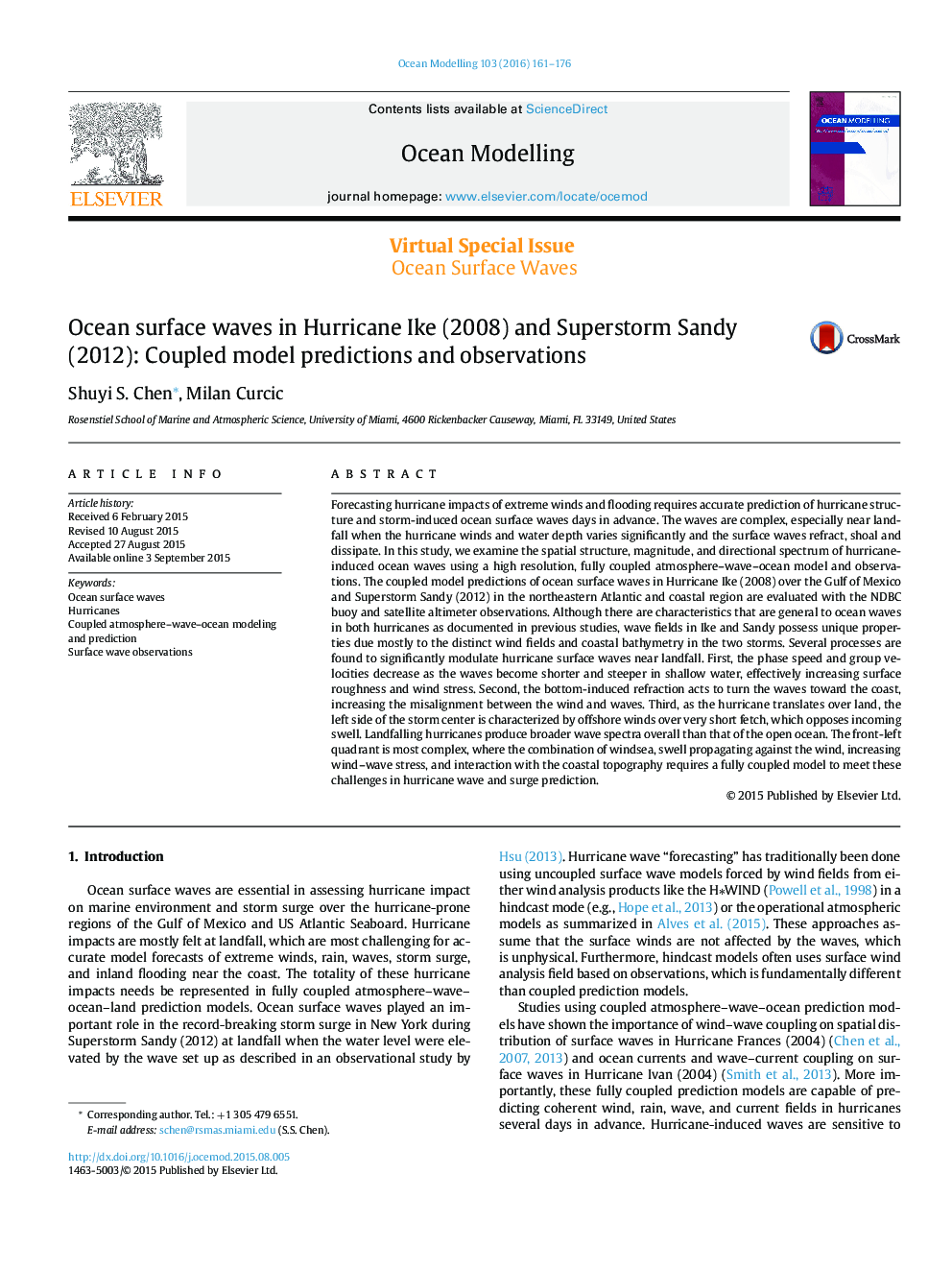| کد مقاله | کد نشریه | سال انتشار | مقاله انگلیسی | نسخه تمام متن |
|---|---|---|---|---|
| 6388030 | 1627746 | 2016 | 16 صفحه PDF | دانلود رایگان |

- Coupled atmosphere-wave-ocean model prediction of hurricane-induced ocean surface waves near landfall.
- Observations of ocean surface waves in Hurricane Ike (2008) and Superstorm Sandy (2012).
- Effects of wind-wave coupling and water depth on ocean surface waves in hurricanes near landfall.
Forecasting hurricane impacts of extreme winds and flooding requires accurate prediction of hurricane structure and storm-induced ocean surface waves days in advance. The waves are complex, especially near landfall when the hurricane winds and water depth varies significantly and the surface waves refract, shoal and dissipate. In this study, we examine the spatial structure, magnitude, and directional spectrum of hurricane-induced ocean waves using a high resolution, fully coupled atmosphere-wave-ocean model and observations. The coupled model predictions of ocean surface waves in Hurricane Ike (2008) over the Gulf of Mexico and Superstorm Sandy (2012) in the northeastern Atlantic and coastal region are evaluated with the NDBC buoy and satellite altimeter observations. Although there are characteristics that are general to ocean waves in both hurricanes as documented in previous studies, wave fields in Ike and Sandy possess unique properties due mostly to the distinct wind fields and coastal bathymetry in the two storms. Several processes are found to significantly modulate hurricane surface waves near landfall. First, the phase speed and group velocities decrease as the waves become shorter and steeper in shallow water, effectively increasing surface roughness and wind stress. Second, the bottom-induced refraction acts to turn the waves toward the coast, increasing the misalignment between the wind and waves. Third, as the hurricane translates over land, the left side of the storm center is characterized by offshore winds over very short fetch, which opposes incoming swell. Landfalling hurricanes produce broader wave spectra overall than that of the open ocean. The front-left quadrant is most complex, where the combination of windsea, swell propagating against the wind, increasing wind-wave stress, and interaction with the coastal topography requires a fully coupled model to meet these challenges in hurricane wave and surge prediction.
Journal: Ocean Modelling - Volume 103, July 2016, Pages 161-176